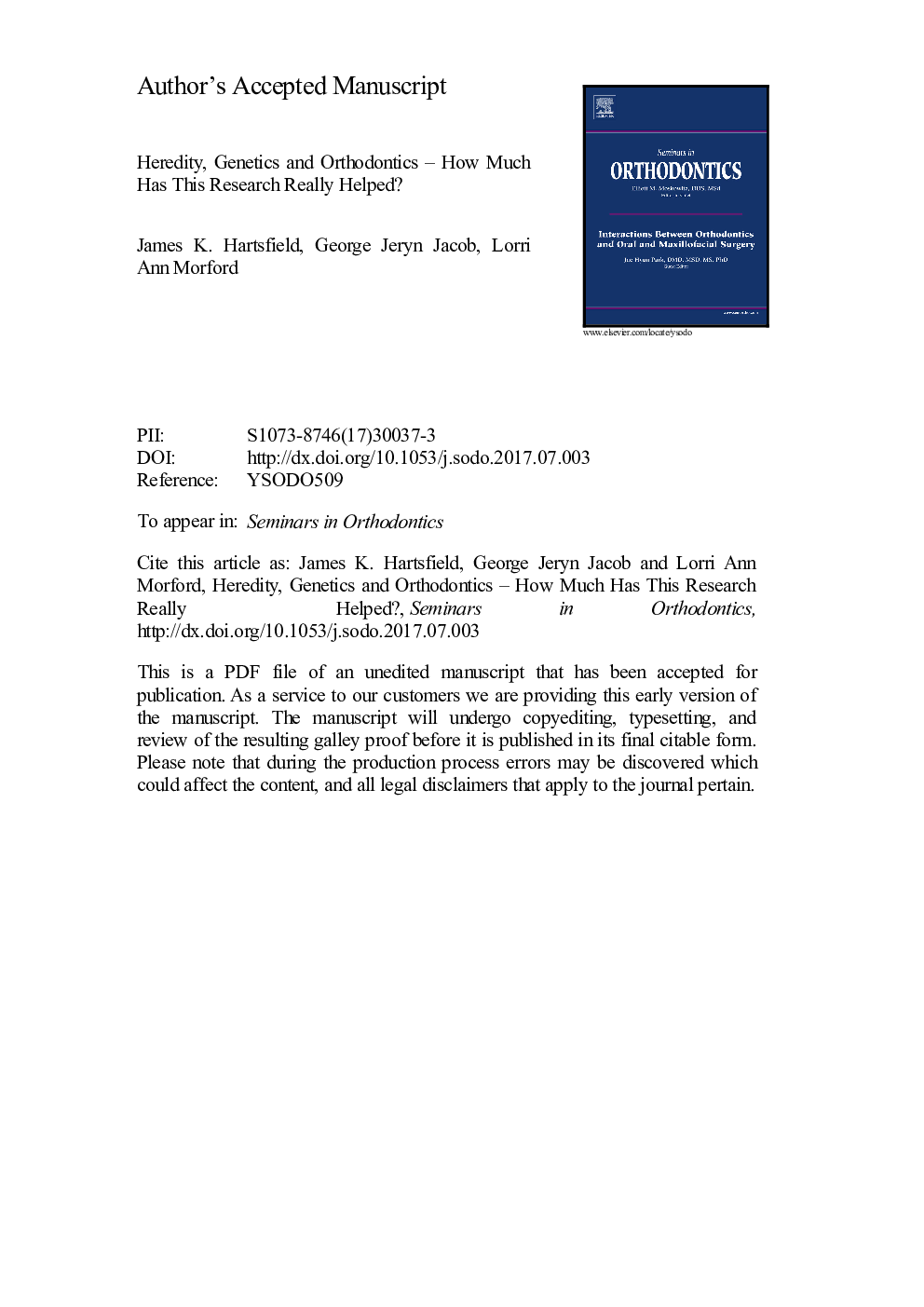| Article ID | Journal | Published Year | Pages | File Type |
|---|---|---|---|---|
| 8708875 | Seminars in Orthodontics | 2017 | 36 Pages |
Abstract
Uncovering the genetic factors that correlate with a clinical deviation of previously unknown etiology helps to diminish the unknown variation influencing the phenotype. Clinical studies, particularly those that consider the effects of an appliance or treatment regimen on growth, need to be a part of these types of genetic investigations in the future. While the day-to-day utilization of “testing” for genetic factors is not ready for practice yet, genetic testing for monogenic traits such as Primary Failure of Eruption (PFE) and Class III malocclusion is showing more promise as knowledge and technology advances. Although the heterogeneous complexity of such things as facial and dental development, the physiology of tooth movement, and the occurrence of External Apical Root Resorption (EARR) make their precise prediction untenable, investigations into the genetic factors that influence different phenotypes, and how these factors may relate to or impact environmental factors (including orthodontic treatment) are becoming better understood. The most important “genetic test” the practitioner can do today is to gather the patient's individual and family history. This would greatly benefit the patient, and augment the usefulness of these families in future clinical research in which clinical findings, environmental, and genetic factors can be studied.
Related Topics
Health Sciences
Medicine and Dentistry
Dentistry, Oral Surgery and Medicine
Authors
James K. Jr, George Jeryn Jacob, Lorri Ann Morford,
